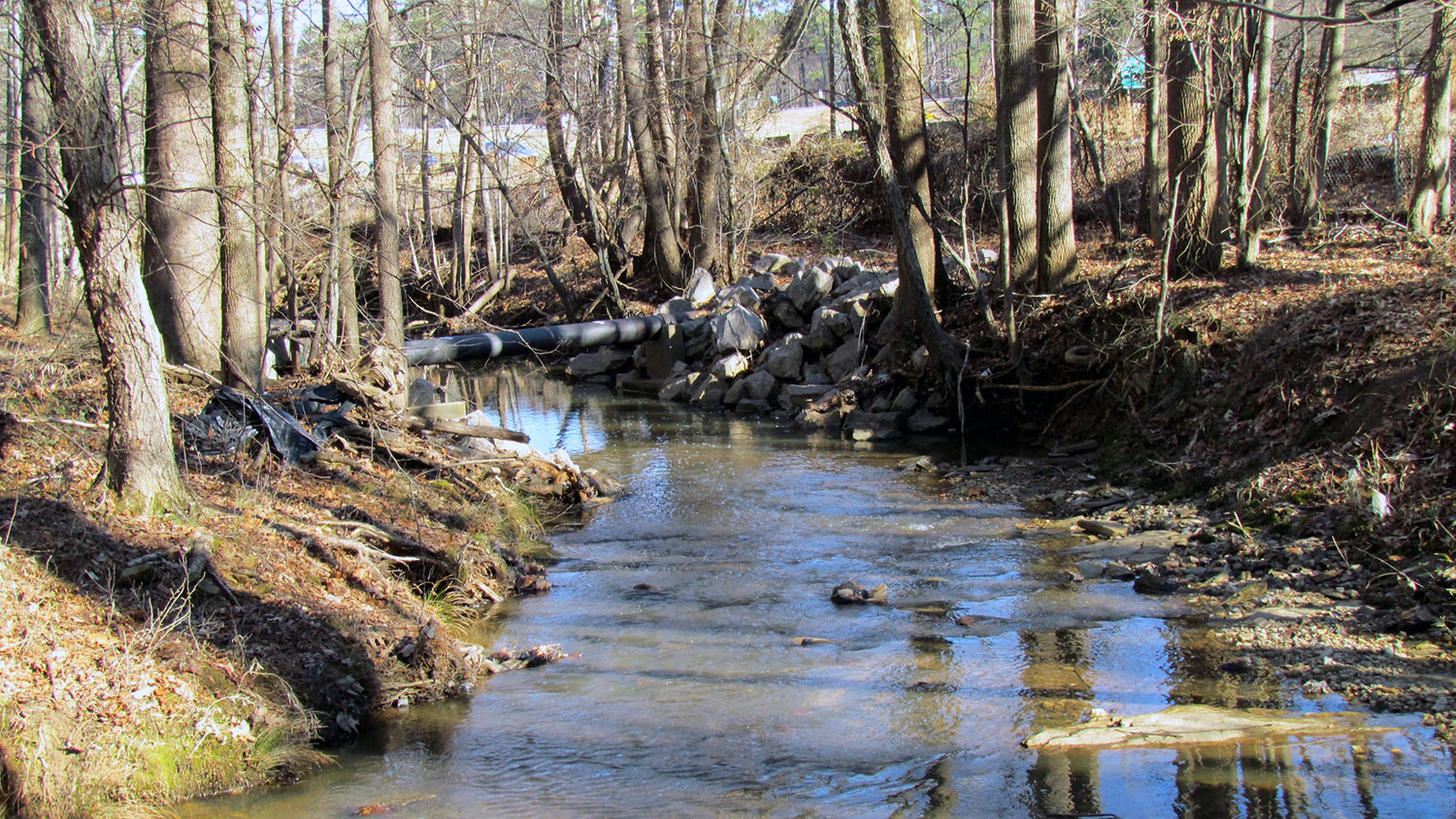New Tools Capture Economic Benefit of Restoring Urban Streams

For Immediate Release
An interdisciplinary team of researchers has developed a suite of tools to estimate the total economic value of improving water quality in urban streams. The work can assist federal and state agencies charged with developing environmental regulations affecting urban ecosystems across the Piedmont Region of the United States, which stretches from Maryland to Alabama.
“Urban streams are ubiquitous and face a number of stressors from rapid economic development,” says Roger von Haefen, professor of agricultural and resource economics at North Carolina State University and corresponding author of a paper on the work. “But there have not been well-established tools to help agencies assess the benefits of regulations aimed at improving the water quality of these streams. Our work here provides a robust set of tools that allow us to assess both use and non-use benefits associated with improved water quality in urban streams.”
“Use” benefits arise from how people directly interact with urban streams. For example, attractive streams can increase property values of nearby homes, whereas polluted streams may diminish property values. “Non-use” benefits capture existence and bequest values, or what people are willing to pay to protect natural resources in their natural state for the benefit of future generations.
To capture the broad range of potential benefits, the researchers developed an “ecological production function framework” that translates observable, biophysical measures of water quality into ecological outcomes that people perceive and value. For example, a biotic index is a scale that uses the diversity of species in a waterbody to assess a stream’s overall ecosystem health, which is an ecological output that the public values.
Specifically, the framework draws on existing water quality monitoring data and uses computational modeling to predict water quality changes related to various regulatory interventions. The framework then leverages expert assessments of how these water quality changes translate into ecological endpoints the public values. A stated preference survey of area residents is then used to quantify the public’s willingness to pay for these outcomes – and, by extension, for improvements in stream water quality.
The researchers demonstrated the utility of the new benefit estimation tools by looking at the Upper Neuse River Basin in Durham and Wake counties, North Carolina.
In this proof-of-concept demonstration, the researchers found that residents of the area containing the Upper Neuse River Basin would be willing to pay an average of $127 per household per year – approximately $54 million in total – for water quality improvements derived from increasing tree cover along stream banks by 25% and decreasing runoff from impervious surfaces, such as streets and parking lots.
“We’ve shown that this approach can work, and it is designed for use in urban areas throughout the Piedmont region,” von Haefen says. “Currently, EPA has limited tools to assess the benefits associated with environmental regulations that affect urban streams. We’re optimistic that federal and state agencies can use this framework to better capture those benefits and make more informed regulatory decisions.”
The paper, “Estimating the Benefits of Stream Water Quality Improvements in Urbanizing Watersheds: An Ecological Production Function Approach,” will be published the week of April 24 in the Proceedings of the National Academy of Sciences (PNAS). The paper was co-authored by Daniel Obenour, an associate professor of civil, construction and environmental engineering at NC State; Jonathan Miller, a teaching assistant professor of civil, construction and environmental engineering at NC State; George Van Houtven of RTI International; Alexandra Naumenko of Visa, Inc.; Melissa Kenney and Hillary Waters of the University of Minnesota; and Michael Gerst of the University of Maryland.
The work was done with support from the U.S. Environmental Protection Agency under STAR grant number 83616501. In addition to its publication in PNAS, the work will be presented at a symposium of research funded through EPA’s STAR grant program, with a focus on research into the benefits of water quality improvements.
-shipman-
Note to Editors: The study abstract follows.
“Estimating the Benefits of Stream Water Quality Improvements in Urbanizing Watersheds: An Ecological Production Function Approach”
Authors: Roger H. von Haefen, Daniel R. Obenour and Jonathan W. Miller, North Carolina State University; George Van Houtven, RTI International; Alexandra Naumenko, Visa, Inc.; Melissa A. Kenney and Hillary Waters, University of Minnesota; and Michael Gerst, University of Maryland
Published: April 24, Proceedings of the National Academy of Sciences
Abstract: Streams in urbanizing watersheds are threatened by economic development that can lead to excessive sediment erosion and surface runoff. These anthropogenic stressors diminish valuable ecosystem services and result in pervasive degradation commonly referred to as “urban stream syndrome.” Understanding how the public perceives and values improvements in stream conditions is necessary to support efforts to quantify the economic benefits of water quality improvements. We develop an ecological-production framework that translates measurable indicators of stream water quality into ecological endpoints. Our interdisciplinary approach integrates a predictive hierarchical water quality model that is well suited for sparse data environments, an expert elicitation that translates measurable water quality indicators into ecological endpoints that focus group participants identified as most relevant, and a stated preference survey that elicits the public’s total willingness-to-pay for changes in these endpoints. To illustrate our methods, we develop an application to the Upper Neuse River watershed located in the rapidly developing Triangle region of North Carolina (USA). Our results suggest, for example, that residents are willing to pay roughly $127 per household and $54 million in aggregate (2021 US$) for water quality improvements resulting from a stylized intervention that increases stream bank canopy cover by 25% and decreases runoff from impervious surfaces, leading to improvements in water quality and ecological endpoints for local streams. Although the three components of our analysis are conducted with data from North Carolina, we discuss how our findings are generalizable to urban and urbanizing areas across the larger Piedmont ecoregion of the eastern US.


